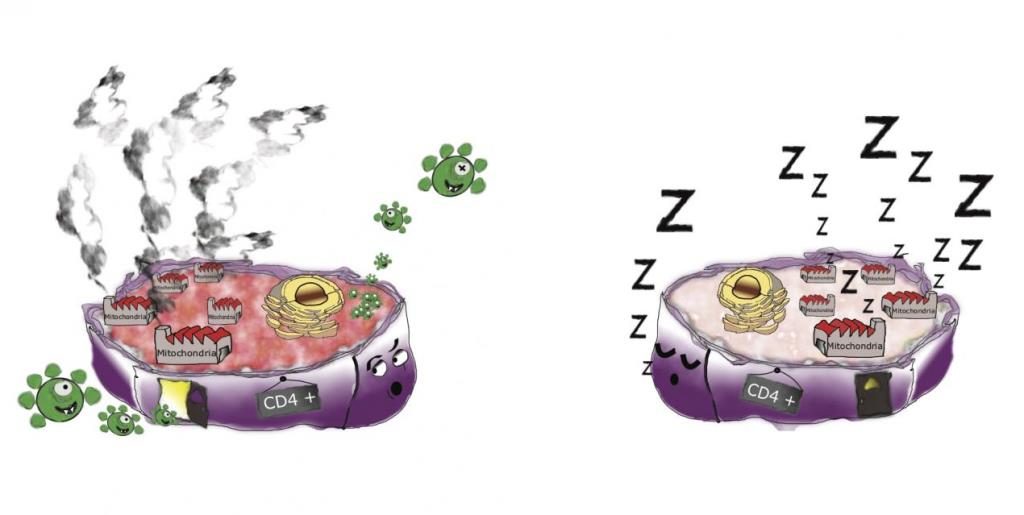
By exploiting how HIV attacks a cell, researchers hope to ‘starve’ out the virus without hurting other cells.
A team of French biologists took one more step toward progress with their recent AIDS/HIV research. A group from Institut Pasteur selectively killed cells where HIV hid from antiretroviral drugs. This could open doors to new drugs and new HIV treatments for infected persons.
HIV returns to a person when they stop taking antiretroviral therapy. The virus hides within HIV-immune T cells. The French study published in a recent edition of Cell Metabolism explained that HIV often infects T cells with higher metabolic activity.
The researchers noted that T cells with that higher metabolic activity — the ones more prone to HIV infection — often consume more nutrients. By blocking the cells’ access to those nutrients, the team could stave off the metabolic activity and kill the cells without harming the other healthy T cells.
They used molecules to block T cells from metabolizing glucose, glutamine, and fatty acids, thus destroying the “reservoirs” where HIV could lurk in a T cell.
“We have observed ex vivo that, thanks to certain metabolic inhibitors, the virus is no longer able to infect cells and amplification is halted in reservoirs of patients receiving antiretroviral treatment,” said study coordinator Asier Saez-Cirion.
The researchers hope this could provide different types of effective treatments regarding HIV. Currently, HIV antiretroviral treatments have to be taken for life, and those treatments can’t get rid of the viral reservoirs themselves. It blocks the HIV infection, but it can’t eliminate the virus from the body. Saez-Cirion noted some parts of the study have shown more promise than others.
“Glucose and glutamine inhibitors showing more promise,” Sáez-Cirión said in an interview with Labiotech. “We are screening different molecules with our tests in the laboratory to identify optimal combinations and the best strategy to apply these molecules in vivo. Then we expect to start small proof of concept preclinical and clinical studies.”
Current HIV treatments involve a drug regimen of one to three pills each day, every day. It’s also critical to take the medicines correctly so that the virus doesn’t become resistant to the drug.
There are five main classes of anti-HIV drugs available: Nucleoside Reverse Transcriptase Inhibitors (NRTIs or “nukes”), non-Nucleoside Reverse Transcriptase Inhibitors (NNRTIs or “non-nukes”), Integrase Inhibitors, Protease Inhibitors (PIs), and Entry Inhibitors.
The French research could one day lead to an entirely new classification of these drugs or adjustments to how these drugs work.
Source: Interesting Engineering

















